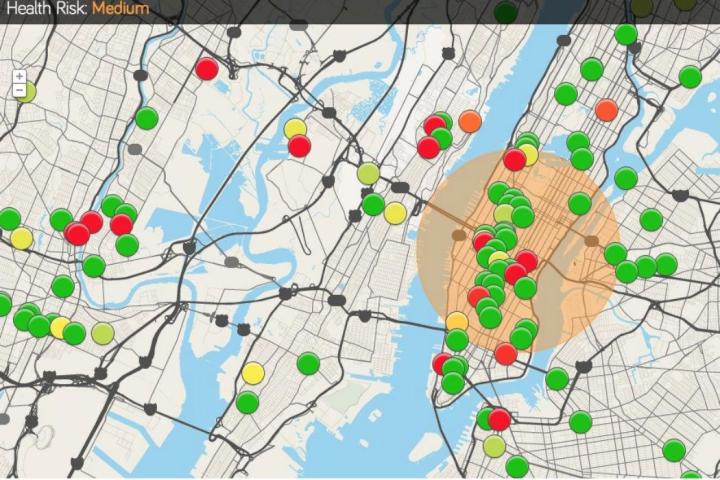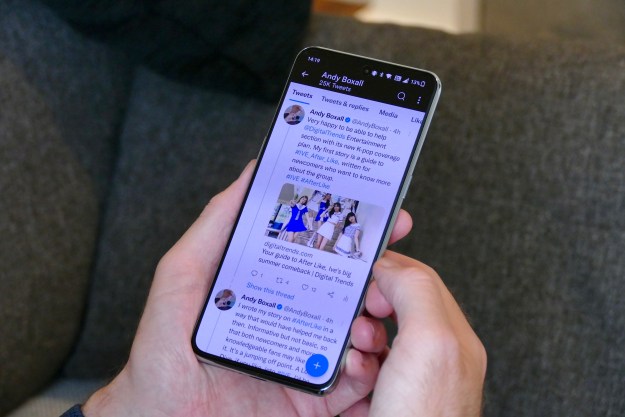
There’s nothing worse than the moment nausea sets in when you realize that buffalo chicken wrap you were raving about over lunch has turned against you violently.
Food poisoning is a blanket term for foodborne illnesses, and they can range from short, mild cases to fatal episodes – and researchers from the University of Rochester believe each case is preventable, and that Twitter can help in prevention efforts.
The researchers came up with a system called nEmesis, which they describe as “an end-to-end system that ‘listens’ for relevant public tweets, detects restaurant visits from geo-tagged Twitter messages, tracks user activity following a restaurant visit, infers the likelihood of the onset of foodborne illness from the text of user communication, and finally ranks restaurants via statistical analysis of the processed data.”
They used 3.8 million tweets from 94,000 Twitter users in the New York area, and they found 480 counts of food poisoning based on tool. nEmesis sorts through tweets by geo-locating keywords that might indicate that someone feels sick after eating – phrases like #upsetstomach and “so sick omg” were used as keywords.
They used an automated filter to sift through the enormous volume of tweets looking for phrases that indicated illness, and then they used people registered with Amazon’s Mechanical Turk program to lend human eyes to the tweets and find the ones most likely to point to illness.
The system pinpoints restaurants that might make you sick based on what people who have visited them tweet — and their findings matched up pretty closely with the New York Department of Health’s current grades, indicating that you probably should stay away from that sketchy but cheap ramen place if it doesn’t pass with flying colors.
This could be enormously helpful if food inspection organizations used nEmesis to determine which restaurants they should check out, since spots with higher incidents of illness could get shut down in a more timely fashion. And it’d be helpful for anyone deciding where they should go out to eat.
Sean Brennan, one of the researchers, says that the nEmesis model could be used to track other issues. “What our model is good at doing is labeling classes of illnesses. In the past we focused mostly on influenza-like illnesses, for example, and this one was about food-borne illnesses, which covers a spectrum of symptoms and causes. A good example of this, and another potential branch of research we were considering, was mental health, particularly depression and anxiety. We think identifying these cases could also be a profound and rewarding contribution to the field.”
But Brennan notes that the tool is good at getting estimates, not exact results, and that it wouldn’t work well if you were searching for too specific a problem. “If you’re looking for something super-specific (instances of strep throat, for example) then there would probably not be enough positive examples to generate a reliable signal, or be statistically significant,” he says.
This kind of model can work in other large cities. “Other English-speaking countries would want to fine-tune our original language model to the local vernacular, since a lot of our naïve language mode – that we used to get our original dataset – depended on colorful American phrases,” Brennan says. “And of course non-English-speaking cities would need to change the language entirely. Unfortunately though, this can really only work on the scale of New York or L.A., and not Madison, WI for example. Geotagged tweets are just too sparse (across both space and time) in some places currently, but this will hopefully improve over the coming years.”
nEmesis isn’t an app yet, but the researchers made something called Germ Tracker based on an older research model. It locates tweets in your area that indicate the people around you are sick – so if you’re a germaphobe, it’s either your best friend or the thing that will make you never want to leave your house again. Yelp has made similar efforts with the addition of restaurant hygiene scores to restaurant pages (the feature is only available in New York and San Francisco, however).
Even though the nEmesis model isn’t perfected yet, it’s a strong example of how researchers can mine social networks to improve public health – and hopefully, if programs like this grow in popularity, they’ll remind restaurant owners that even if the health inspectors aren’t coming around, sleazy food service habits won’t remain unnoticed by diners.
Editors' Recommendations
- How to get verified on Instagram Threads
- Why is Twitter called X now? Here’s everything you need to know
- No joke: Twitter is taking away your blue check on April 1, unless you pay
- You can bid for Twitter’s bird statue right now
- Twitter’s SMS two-factor authentication is having issues. Here’s how to switch methods


